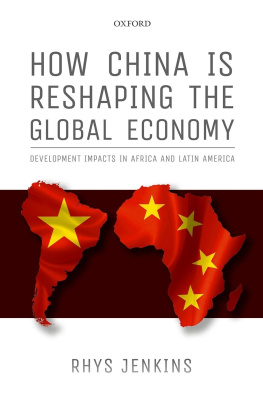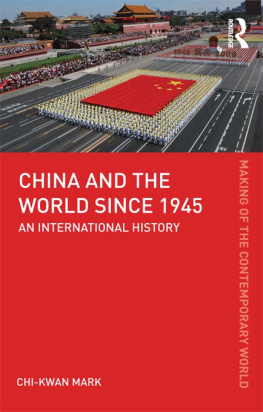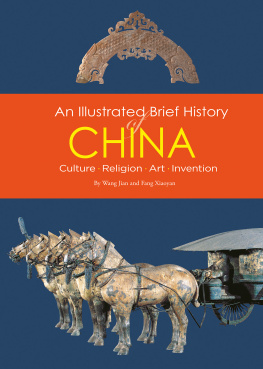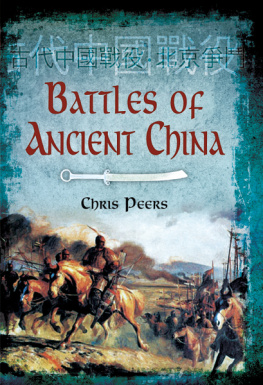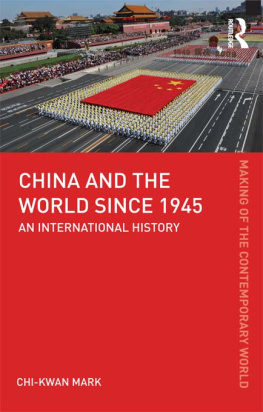China in World History


China in World History
Paul S. Ropp


Oxford University Press, Inc., publishes works that further
Oxford Universitys objective of excellence
in research, scholarship, and education.
Oxford New York
Auckland Cape Town Dar es Salaam Hong Kong Karachi
Kuala Lumpur Madrid Melbourne Mexico City Nairobi
New Delhi Shanghai Taipei Toronto
With offices in
Argentina Austria Brazil Chile Czech Republic France Greece
Guatemala Hungary Italy Japan Poland Portugal Singapore
South Korea Switzerland Thailand Turkey Ukraine Vietnam
Copyright 2010 by Oxford University Press, Inc.
Published by Oxford University Press, Inc.
198 Madison Avenue, New York, NY 10016
www.oup.com
Oxford is a registered trademark of Oxford University Press
All rights reserved. No part of this publication may be reproduced,
stored in a retrieval system, or transmitted, in any form or by any means,
electronic, mechanical, photocopying, recording, or otherwise,
without the prior permission of Oxford University Press.
Library of Congress Cataloging-in-Publication Data
Ropp, Paul S., 1944
China in world history / Paul Ropp.
p. cm.
Includes bibliographical references and index.
ISBN 978-0-19-517073-3; ISBN 978-0-19-538195-5 (pbk.)
1. China--History. 2. ChinaCivilization.
3. China--CivilizationForeign influences. I. Title.
DS735.R67 2010
951dc22
2009051140
1 3 5 7 9 8 6 4 2
Printed in the United States of America
on acid-free paper
Frontispiece: Qing dynasty incense burner, stoneware with iron wash and glazes.
Freer Gallery of Art, Smithsonian Institution, Washington, D.C.:
Gift of Charles Lang Freer, F1900.57a-b
For CJ, Simone, and Silas
Editors Preface
This book is part of the New Oxford World History, an innovative series that offers readers an informed, lively, and up-to-date history of the world and its people that represents a significant change from the old world history. Only a few years ago, world history generally amounted to a history of the WestEurope and the United Stateswith small amounts of information from the rest of the world. Some versions of the old world history drew attention to every part of the world except Europe and the United States. Readers of that kind of world history could get the impression that somehow the rest of the world was made up of exotic people who had strange customs and spoke difficult languages. Still another kind of old world history presented the story of areas or peoples of the world by focusing primarily on the achievements of great civilizations. One learned of great buildings, influential world religions, and mighty rulers but little of ordinary people or more general economic and social patterns. Interactions among the worlds peoples were often described from only one perspective.
This series tells world history differently. First, it is comprehensive, covering all countries and regions of the world and investigating the total human experienceeven those of so-called peoples without histories living far from the great civilizations. New world historians thus share in common an interest in all of human history, even going back millions of years before there were written human records. A few new world histories even extend their focus to the entire universe, a big history perspective that dramatically shifts the beginning of the story back to the Big Bang. Some see the new global framework of world history today as viewing the world from the vantage point of the Moon, as one scholar put it. We agree. But we also want to take a close-up view, analyzing and reconstructing the significant experiences of all of humanity.
This is not to say that everything that has happened everywhere and in all time periods can be recovered or is worth knowing, but that there is much to be gained by considering both the separate and interrelated stories of different societies and cultures. Making these connections is still another crucial ingredient of the new world history. It emphasizes connectedness and interactions of all kindscultural, economic, political, religious, and socialinvolving peoples, places, and processes. It makes comparisons and finds similarities. Emphasizing both the comparisons and interactions is critical to developing a global framework that can deepen and broaden historical understanding, whether the focus is on a specific country or region or on the whole world.
The rise of the new world history as a discipline comes at an opportune time. The interest in world history in schools and among the general public is vast. We travel to one anothers nations, converse and work with people around the world, and are changed by global events. War and peace affect populations worldwide as do economic conditions and the state of our environment, communications, and health and medicine. The New Oxford World History presents local histories in a global context and gives an overview of world events seen through the eyes of ordinary people. This combination of the local and the global further defines the new world history. Understanding the workings of global and local conditions in the past gives us tools for examining our own world and for envisioning the interconnected future that is in the making.
Bonnie G. Smith
Anand Yang
Preface
My purpose in this book is to narrate the long history of China within the larger context of world history. At each step along the way, I will try to address these questions: How has the development of Chinese civilization compared with contemporaneous civilizations elsewhere in the world? What has China shared with other civilizations, and what are the unique or distinctive traits of Chinese civilization? What is the history of Chinas relations with cultures and peoples beyond its borders? How have foreign peoplesmerchants, diplomats, missionaries, and soldiersaffected the development of Chinese civilization? What have been the most important changes and continuities in Chinas long history?
Today we think of China as the worlds oldest continuous civilization. An identifiable and sophisticated Chinese culture emerged by 1500 bce and has shown remarkable continuity in its language, cultural values, and social and political organization over the past three and a half millennia. A major question in the study of China is how such remarkable linguistic, political, and cultural continuity could be maintained for so long over such a large area. Why was China, alone among the early human civilizations, able to sustain political, cultural, and linguistic unity and continuity over an entire subcontinent through a period of three thousand years without the benefit of modern industrial technology?
Jared Diamond has noted that all the great civilizations except Chinas have been melting pots of many divergent peoples, languages, and cultures. And he insightfully adds that China began its early history as an ancient melting pot. That is, the area that defines China today began with a multiplicity of peoples, languages, cultures, and ethnicities, which, beginning in the second millennium bce, came to be conquered, dominated, absorbed, marginalized, or pushed away by the Han Chinese people, who around 1500 bce formed a sophisticated civilization with Chinese writing, bronze technology, an efficient and productive agriculture supporting large walled cities and towns, and powerful armies with crossbows, bronze spears, and horse-drawn chariots.
Next page

